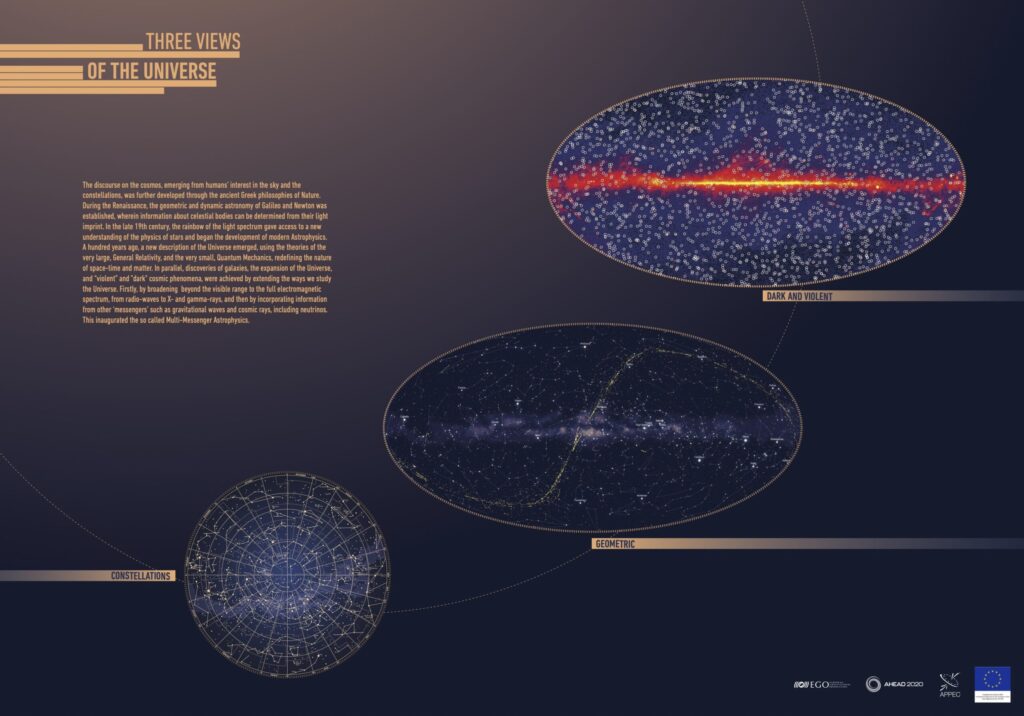The discourse on the cosmos, emerging from humans’ interest in the sky and the constellations, was further developed through the ancient Greek philosophies of Nature. During the Renaissance, the geometric and dynamic astronomy of Galileo and Newton was established, wherein information about celestial bodies can be determined from their light imprint. In the late 19th century, the rainbow of the light spectrum gave access to a new understanding of the physics of stars and began the development of modern Astrophysics.

A hundred years ago, a new description of the Universe emerged, using the theories of the very large, General Relativity, and the very small, Quantum Mechanics, redefining the nature of space-time and matter. In parallel, discoveries of galaxies, the expansion of the Universe, and “violent” and “dark” cosmic phenomena, were achieved by extending the ways we study the Universe.
Firstly, by broadening beyond the visible range to the full electromagnetic spectrum. From radio-waves to X- and gamma-rays, and then by incorporating information from other “messengers” such as gravitational waves and cosmic rays, including neutrinos. The inaugurated the so called Multi-Messenger Astrophysics.
